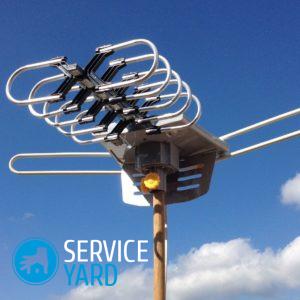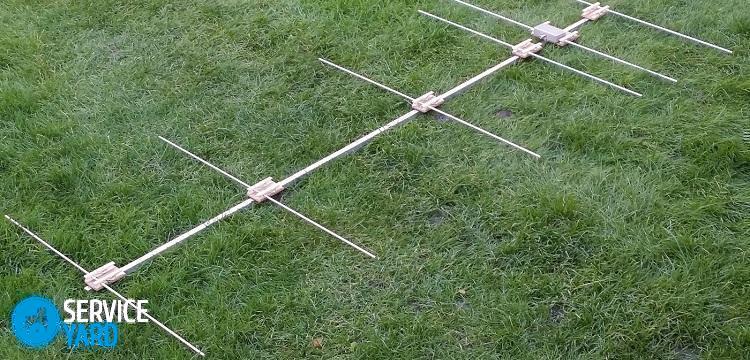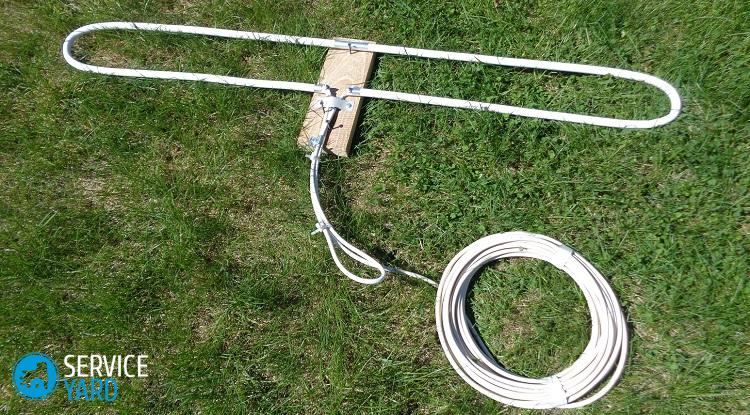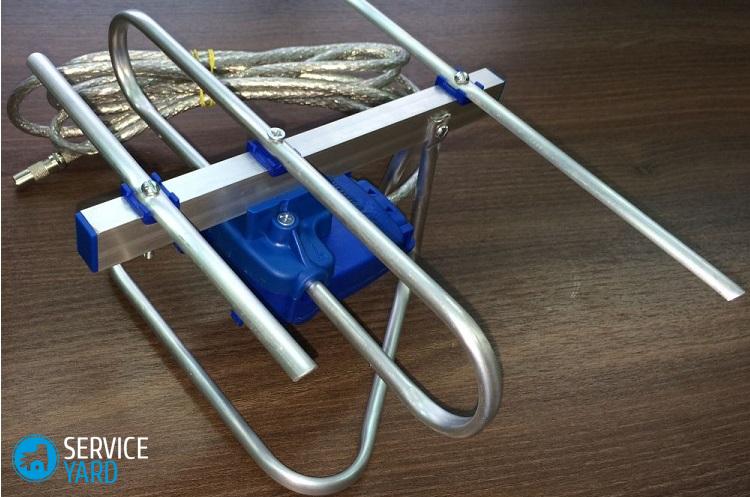How to make a radio antenna for your own hands?

Radio receivers have long and fairly firmly entered the life of modern man. At home, we listen to news and music on the radio, and it is also actively used on the way to work in the car, while walking in the fresh air. But in order for the volume and quality of the reproduced sound to be at the highest level, the receiver must be connected to the antenna. There is nothing complicated in its design, so today we will learn how to make an antenna for a radio with our own hands.
to contents ↑Features of the radio
The normal operation of any radio receiver, cell phone, television or receiver is ensured by providing a minimum signal at the input that exceeds a certain threshold. They call it sensitivity. So, if the signal level exceeds the sensitivity threshold, the device functions normally, otherwise the sound disappears sharply or worsens.
As a rule, such conditions arise due to the remoteness of the radio station or bad weather conditions. This mainly happens with receivers on the FM and VHF bands, which is due to the propagation features of this signal itself.
to contents ↑Important! Radio waves with a signal range of 66-108 MHz propagate exclusively within unobstructed visibility, it is difficult for them to go around hills on a relief terrain, and all cities are known to be crowded with tall buildings.
Varieties of antennas
Before you make an antenna for a radio at home, you should understand what they are. The main purpose of these devices is to receive, amplify or transmit a signal at the input of the receiver. Depending on the range, they can have different dimensions and design.
Important! There are several dozens of types of antennas, some of which are complex engineering devices, with huge weight and dimensions, which spread over thousands of square meters.
And the simplest option involves the use of a conductor as a receiving antenna using insulators suspended above the ground. At the moment of intersection with it, the waves induce an alternating voltage with a high frequency on it and transmit it directly to the input. As a result, the received signal is amplified, and the low-frequency wave that a person hears begins to stand out from it.
All antennas are divided into two types - non-directional and directional. There is also a classification according to their purpose, that is, mobile and stationary. But, despite all the difference in species and types, they work according to the same laws.

DIY foil antenna manufacturing
Now we will tell you how to make an antenna for the music center to improve radio reception. Depending on the range for which it is intended, its dimensions can be slightly adjusted.
Necessary tools and materials:
- Metal foil.
- Dielectric material, fiberboard, dried board.
- Plug for connecting to the receiver.
- A piece of shielded cable whose resistance is 50-75 ohms.
- Flux, soldering iron, solder.
Assembly order
The manufacturing process of this antenna is simple and takes very little time:
- First, a square frame should be made from a single piece of foil according to the dimensions indicated on the diagram. Then make a cutout of 15 mm wide at the bottom of the frame.
- Then the finished frame is attached with glue to a flat wooden base, dielectric material or fiberboard.
- To the left or right of the cut-out, the central core and the screen are soldered to the lower edge of the finished square. It remains only to solder the shielded wires to the screen.
Important! The considered scheme of a homemade antenna allows you to make a device for placement on the street or indoors. The signal is configured very simply: it is enough to move the antenna vertically smoothly, turning it around its axis.

Creating a pipe antenna at home
If you are interested in how to make a good antenna for a radio, then this option will definitely suit you. The basis of this design is heating or plumbing house pipes.
From the materials you need:
- Ferrite core from an old tube TV transformer.
- Insulating and adhesive tape, glue.
- Copper or brass foil.
- 1.5 m of copper wire for mounting with a cross section of 0.25 square meters. mm
- For connecting to the antenna receiver, connecting pins.
Operating procedure
Making a homemade antenna is as follows:
- To make the winding, it is necessary to lay paper or tape in two layers on the ferrite core.
- A single layer of foil laid on top of the paper with overlapping turns of 1 cm will help isolate the contacts in the overlap area with electrical tape.
- Then, 25 turns of wire should be wound on the prepared screen, while it is imperative to make bends at 7, 12, 25 turns.
- The resulting circuit is wrapped with a screen, then it connects to the rest of the details.
- Then the ends of the wire are inserted into the connecting pins.
- The wire output on the 7th turn is connected to the ground socket, while the other wires are connected to the antenna terminal.
It’s not difficult to set up the reception: just try to choose the connection of the winding of the communication loop.
Important! Thanks to the reliable grounding of this device using internal house heating pipes, it can be used to receive a signal even during a thunderstorm. In this case, the risk of damage to the antenna is minimized.

DIY omnidirectional coaxial cable antenna
Such a device, as a rule, is used in order to amplify the radio signal in the area of poor reception.
Materials will be required such:
- Wooden mast.
- 1.5 m television cable.
- 1.5 m plastic pipe with a diameter of 20 mm.
Assembly order
The scheme for creating such an antenna is quite simple and represents a series of the following actions:
- Stepping back from the beginning of the 750 mm wire, make an incision to further eliminate plastic insulation. At the same time, the integrity of the screen braid should be maintained.
- After loosening and knitting the braid, turn the screen without damaging the copper core towards the place where the insulation was cut.
- Then install and securely fix the antenna in any way inside the plastic pipe.
- Next, it must be attached to a wooden mast.
to contents ↑Important! The signal is adjusted after the device is connected to the receiver, the adjustment occurs vertically. You do not have to rotate the structures around the axis.
Stock footage
So you have learned how to make a good antenna for a music center or radio at home without any special financial and labor costs. Choose a scheme that is more convenient for you, and follow the instructions to get the device you need from improvised materials.
- How to choose a vacuum cleaner taking into account the characteristics of the house and coatings?
- What to look for when choosing a water delivery
- How to quickly create comfort at home - tips for housewives
- How to choose the perfect TV - useful tips
- What to look for when choosing blinds
- What should be running shoes?
- What useful things can you buy in a hardware store
- Iphone 11 pro max review
- Than iPhone is better than Android smartphones



